N Gauge Farish 371-851SF DCC SOUND Class 158 2 Car DMU 158711 ScotRail Saltire
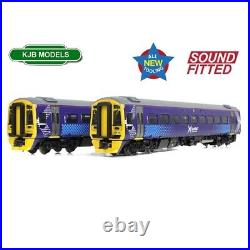
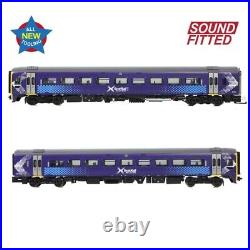
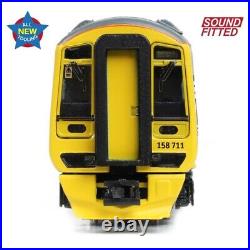
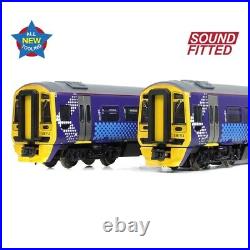
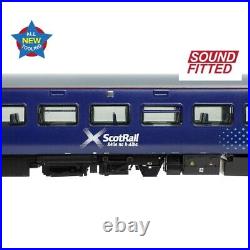


371-851SF DCC SOUND Class 158 2 Car DMU 158711 ScotRail Saltire. Brand new item from our New Yorkshire model railway shop. Analogue Users: Please note that basic prime mover sounds will operate and will vary according to use when this model is used on analogue control (DC) straight from the box!
Directional lights and passenger compartment lights will also illuminate when power is applied. F0 - Directional Lights - On / Off.
F1 - On - Warm Start / F5 - On, then F1 - On - Cold Start. F5 - Light Engine / Cold Engine Start. F6 - Engine Idle / Coasting. F8 - On - Doors Opening (F1 On) / Off - Doors Closing (F1 On). F10 - On - Guard's Buzzer (Single) / Driver's Response Buzzer (Single). F11 - On - Guard's Buzzer (Double) / Driver's Response Buzzer (Double). F12 - Engine Speed Up. F13 - Air Conditioning Fan. F15 - On - Doors Opening (F1 Off) / Off - Doors Closing (F1 Off). F16 - Fade All Sounds. F17 - Directional Lights Off (Car A, 57xxx). F18 - Directional Lights Off (Car B, 52xxx). F20 - Remote Telephone Test. F23 - F26 - No User Access. The Class 158 is one of British Rail's most successful second generation Diesel Multiple Units (DMUs); first introduced in 1989, all but one of the original units remain in traffic to this day.This all-new Graham Farish model follows in the footsteps of the brand's award winning Class 319 Electric Multiple Unit and captures this iconic prototype to a tee. The pinnacle of N scale second generation DMUs, the Graham Farish Class 158 combines high fidelity bodyshells with an underframe that's adorned with separate components depicting the engines, electrical equipment, and auxiliary gear. It's the livery application which really brings these models to life and every element has been replicated in miniature.
Whilst the main colours are spray painted, the myriad smaller logos, symbols and lettering are applied using a specialist printing process, using BR and corporate specification fonts, logos and colours. Driven by the low-level drive mechanism, each vehicle sports uninterrupted views of the interior which is fitted out with tables, chairs and even metal luggage racks - made visible thanks to the saloon lighting. Pristine BR Regional Railways livery. Two-Car Unit comprising car Nos. Destination blinds for Edinburgh Waverley. DCC Ready - It is NOT DCC Fitted. DETAIL VARIATIONS SPECIFIC TO THIS MODEL. Revised Air Conditioning (Type B).Toilet Discharge via CET Tank. GRAHAM FARISH CLASS 158 SPECIFICATION. Coreless, twin shaft motor with two flywheels providing drive to both bogies of the DMS (A) vehicle. Four axle drive all axles on the DMS (A) vehicle. Trailing axles run in metal pinpoint bearings all axles on the DMS (B) vehicle.
Gearing arranged for prototypical running speeds and haulage capabilities. 9mm (N gauge) wheels to NEM310 standards with authentic profile and detailing. Working miniature BSI Couplings at the cab ends (alternative air dams are included to allow this feature to work on second radius curves or less). Close coupling mechanism with integral conductive couplings fitted between vehicles. Designed to operate on curves of second radius (263.5mm) or greater.
Highly detailed bodyshell with flush, tinted glazing. Unobstructed interior including seat and table detail. Bogies constructed from multiple components featuring full relief detail. Separately applied underframe equipment and detail components. Separately applied metal detail parts, including exhaust guards and interior luggage racks.Each model is supplied with an accessory pack comprising exhaust pipes and cab end connector door covers (where appropriate). Directional lighting, including illuminated destination panels, switchable on/off at either end on DCC or Analogue control.
Cab and saloon interior lighting, switchable on/off via the under-chassis switches. Authentic light colours and temperatures selected for each model based on era and application. Next18 DCC decoder interface - one decoder required per unit. Easy-access DCC decoder socket located behind removable panel on underside of DMS (B).
Authentic liveries applied to all models. Multiple paint applications employed on each model using BR/TOC specification colours. Logos, numerals and text added as appropriate using multi-stage tampo printing using authentic typefaces, logos and colours.
